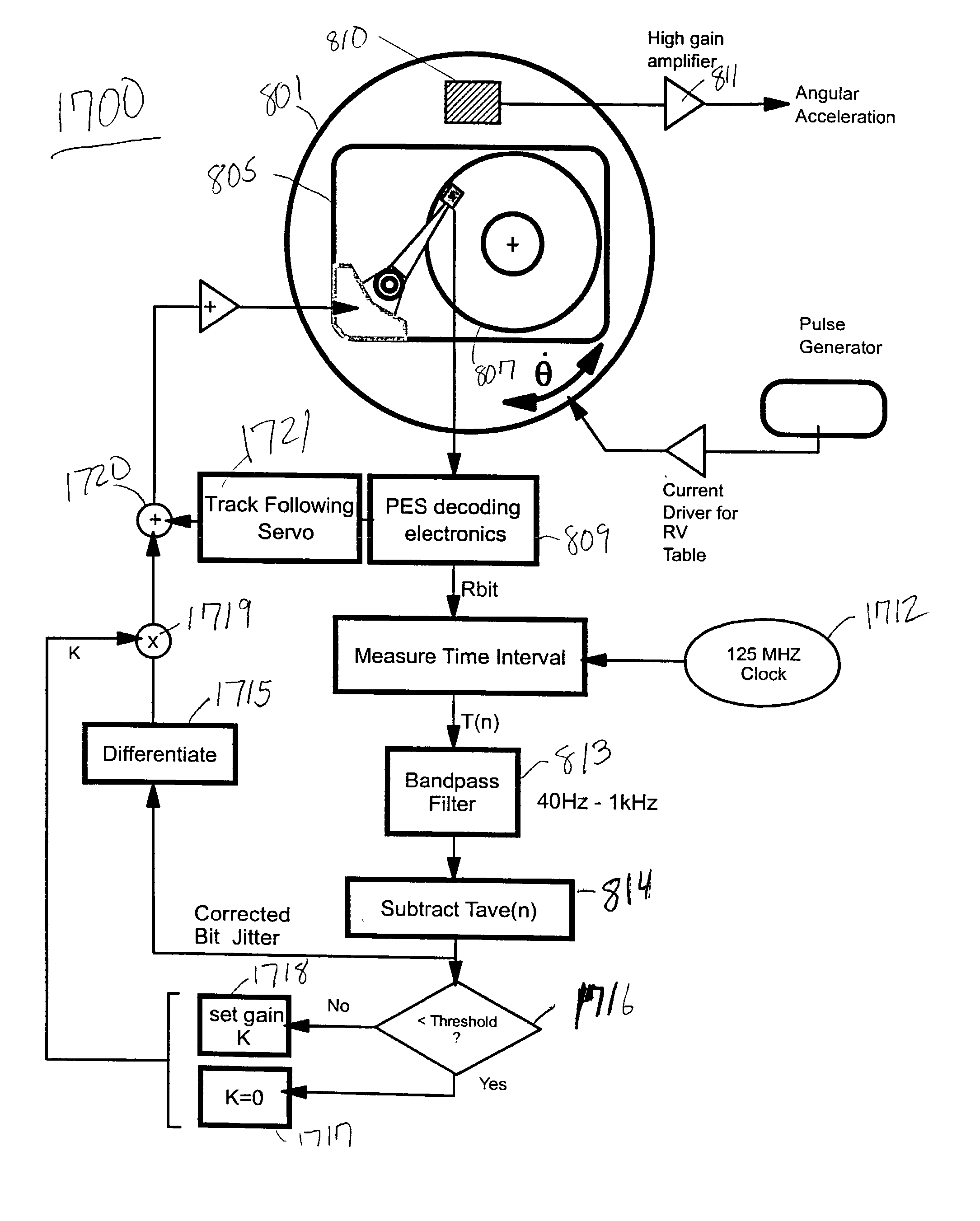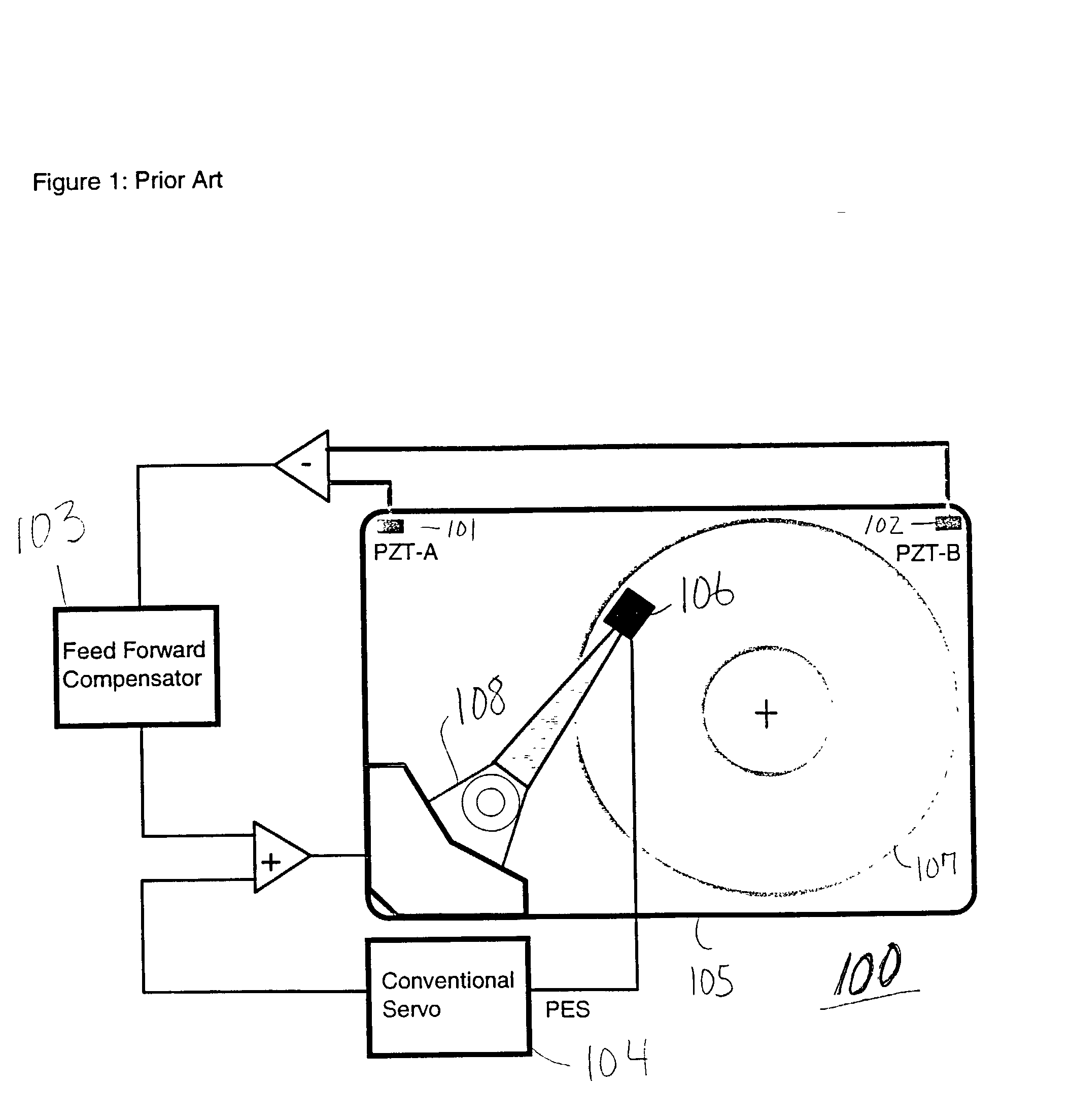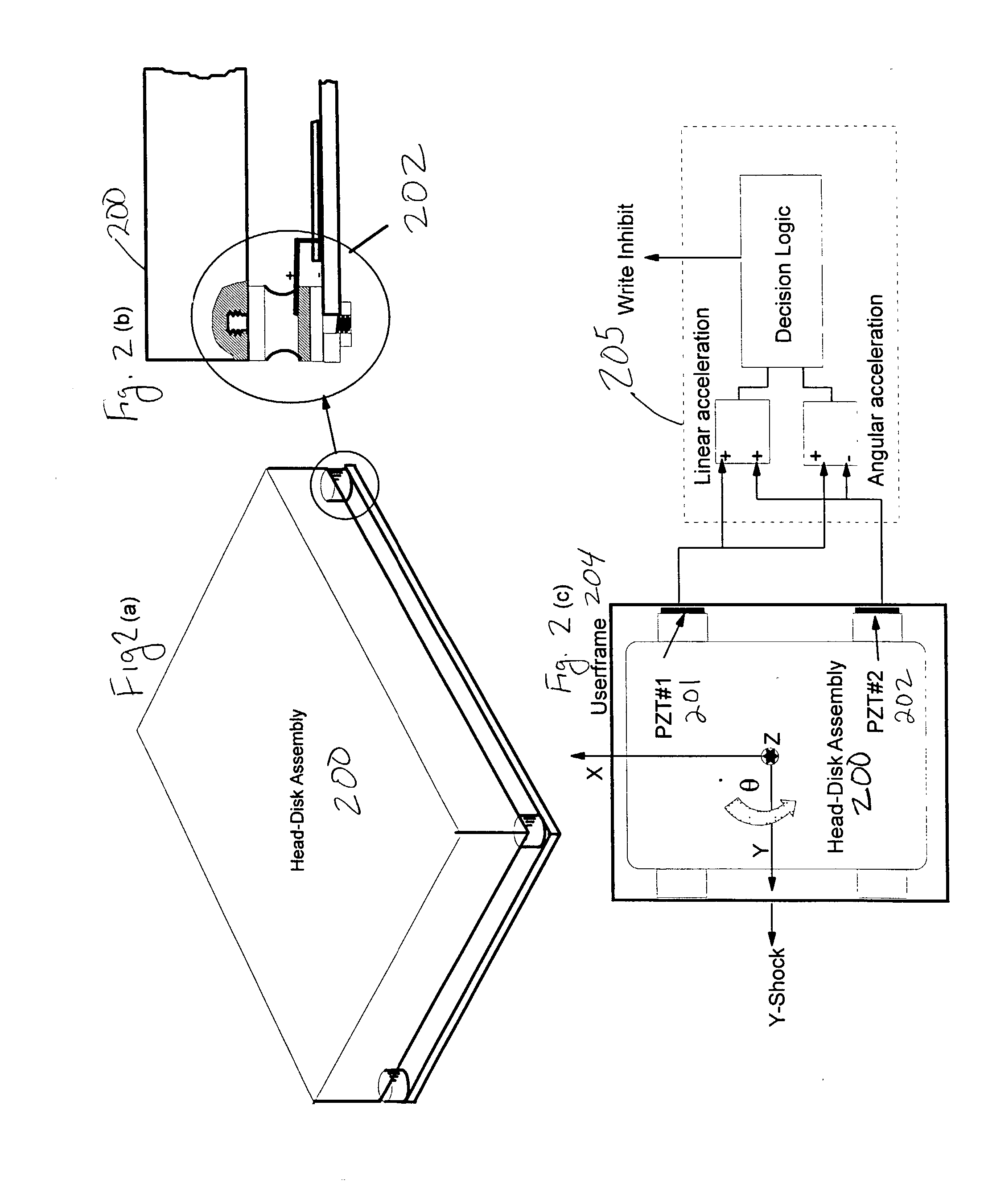Method and system for time-shift based rotational vibration sensing in disk drives
a disk drive and rotational vibration technology, applied in the field of disk drives, can solve the problems of high criticality of vibration induced track following error components, computer system itself may be subject to external seismic excitation, and the accuracy of head positioning in a disk drive is prone to both self-generated vibration and vibration
- Summary
- Abstract
- Description
- Claims
- Application Information
AI Technical Summary
Problems solved by technology
Method used
Image
Examples
Embodiment Construction
[0056] Referring now to the drawings, and more particularly to FIGS. 3-18, there are shown preferred embodiments of the method and structures according to the present invention.
[0057] Preferred Embodiment
[0058] As shown in FIG. 3, an actuator of a disk drive generates a reaction torque during a seek. In computer configurations where there are multiple drives arranged in the form of an array, the multiple reactions produced by the drives generate a vibration spectrum. The form and magnitude of a vibration (e.g., both linear and rotational) spectrum is system specific, but it tends to be a band-limited power spectrum interspersed with a finite number of harmonics.
[0059] As shown in FIG. 3, the base-plate vibration, especially along X, Y and about Z axes can contribute to TMR. A major contribution to TMR comes from rotational vibration about the Z axis (e.g., so-called theta-dynamics). The actuator mass imbalance contributes to TMR through the torque disturbance produced by the linear ...
PUM
| Property | Measurement | Unit |
|---|---|---|
| seek time | aaaaa | aaaaa |
| seek time | aaaaa | aaaaa |
| frequency | aaaaa | aaaaa |
Abstract
Description
Claims
Application Information
 Login to View More
Login to View More - R&D
- Intellectual Property
- Life Sciences
- Materials
- Tech Scout
- Unparalleled Data Quality
- Higher Quality Content
- 60% Fewer Hallucinations
Browse by: Latest US Patents, China's latest patents, Technical Efficacy Thesaurus, Application Domain, Technology Topic, Popular Technical Reports.
© 2025 PatSnap. All rights reserved.Legal|Privacy policy|Modern Slavery Act Transparency Statement|Sitemap|About US| Contact US: help@patsnap.com



